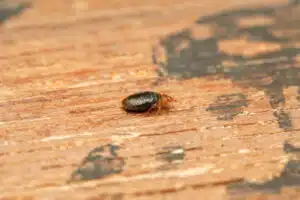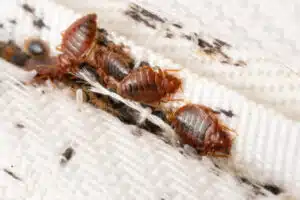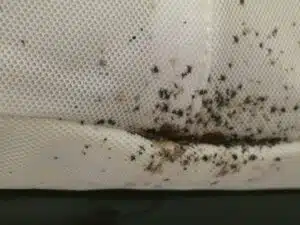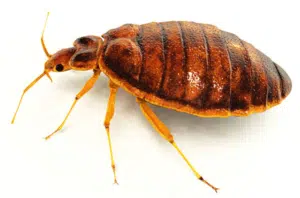How Long do You Have to Stay Out of Your House After Pest Control?
Pest control is a critical measure when it comes to ensuring the safety and comfort of your home. However, many homeowners wonder, “How long do I have to stay out of my house after pest control?” The answer isn’t always straightforward, as it largely depends on the type of treatment used by professionals.
In this blog, we’ll explore the factors determining the safe duration outside your home post-treatment. Whether you’re dealing with a routine spray or a full-scale fumigation, understanding the safety protocols is key. For standard treatments involving toxic pesticides, it’s wise to allow 2-4 hours for the chemicals to settle. After this period, an additional 30 minutes with windows open and fans operating is recommended to ensure the air quality is back to normal.
On the other hand, some modern pest control methods are designed to be less intrusive, not requiring you to leave your home at all. However, a professional safety check is mandatory for more intensive options like fumigation due to the heightened risk of pesticide exposure.
Understanding the Wait Time After Pest Control Treatments
The wait time after pest control can vary significantly based on the specific chemicals and methods used. For instance, treatments that involve organic or natural pesticides may require a shorter absence from your home, sometimes as little as 1 hour. These eco-friendly options are designed to be safe for both humans and pets, allowing for a quicker return to your living spaces.
Factors Influencing Reentry Time
Several factors influence the recommended wait time after pest control, including:
- Chemical Composition: Some pesticides have a longer residual effect, meaning they remain active for an extended period to ensure the elimination of pests. These may require a longer wait time before reentry.
- Ventilation: Homes with better ventilation can air out more quickly, reducing the necessary wait time.
- Weather Conditions: On higher temperatures and lower humidity days, pesticides may evaporate and disperse faster, potentially shortening the wait time.
- Pest Infestation Level: Severe infestations might need stronger or more prolonged treatments, leading to longer wait times.
Post-Treatment Precautions
After the designated wait time, it’s important to take certain precautions when reentering your home:
Let Fresh Air In
Ventilate Your Home: After pest control, it’s important to clear the air. Open all windows and doors to let fresh air flow for at least 30 minutes to an hour. This helps remove any leftover treatment odors.
Clean Your Home
Disinfect Surfaces: Clean all areas exposed during the treatment, especially where you prepare and eat food. This is crucial to keep your home hygienic.
Take Care of Your Clothes and Linens
Wash Textiles: Any fabrics, like bed sheets, curtains, and clothes, that might have been exposed should be washed. This removes any treatment residue.
Watch for Signs of Pests
Check for Pests: After treatment, you might see more pests at first, but they should decrease over time. Keep an eye out for any unusual activity and report it.
The time required to stay out of your house after pest control varies, but by understanding the factors involved and taking the right precautions, you can ensure a safe and comfortable return to your home. Always prioritize safety and consult with professionals to address any concerns you may have post-treatment.
Remember, the goal of pest control is not just to eliminate pests but to maintain a healthy living space for you and your family. By following these guidelines, you can enjoy the benefits of a pest-free home without compromising on safety.
Related Articles

Tick vs. Bed Bugs: Differences and Similarities
Understanding the differences between two common blood-sucking pests, ticks and bed bugs, is important. We want to make sure you know exactly what kind of pests you’re dealing with,

Where Do Bed Bugs Come From, and How to Prevent Them? A Guide for Salt Lake Residents
Bed bugs can be a major nuisance and cause various physical and emotional problems, including skin irritation, anxiety, and sleep disturbances. In Salt Lake City, bed bugs are a growing concern, especially in apartment buildings, hotels, and other high-density living spaces. But where do bed bugs come from, and how can you prevent them from infesting your home or property?

Are All the Tiny Black Bugs in My Bed Bed Bugs?
Sleeping is one of the things that we look forward to after a very long day. We recharge ourselves by sleeping by the end of the night to be refreshed the next day. But we can be disturbed even during our sleep by pesky pests crawling and hiding where we sleep. That’s terrifying, right? Pests that are known to annoy us during our sleep are bed bugs. They are usually found where humans and other pets sleep. Bed bugs can be almost anywhere in the world – even in your Saltlake home! They can be annoying because they suck your blood and leave you with an itch and bumps in the infected area. So blood attracts them, even the blood of other animals. Therefore, you should conduct bed bug removal if you have them. If you find bugs on your beds, you might think they are bed bugs. But are they?

Can Bed Bugs Live in Your Car?
Bed bugs are small, flat, and oval-shaped insects that feed on the blood of humans and animals. During the day, bed bugs hide in cracks and crevices around beds, furniture, and baseboards. You can also find them in mattresses, bed frames, blankets, carpets, and other fabric items throughout your home. While it is possible for bed bugs to infest your car, they’re less likely to do so than inside a house or other structure.

How to Find Bed Bugs in Your Home
Bed bugs are small, blood-sucking that feed on human and animal blood. They belong to the family Cimicidae, contain over 100 species, and have been around for millions of years.

Can Bed Bugs Jump?
Bed bugs are a common household pest that can be difficult to get rid of. These tiny insects can live in any crevice or crack in your home and feed on blood.
